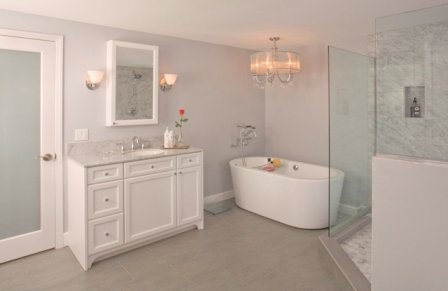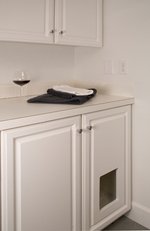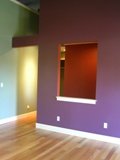Definition - LEED: Leadership in Energy and Environmental Design, a green building certification system established in 2000 by the United State Green Building Council (USGBC) LEED AP: LEED Accredited Professional, a person who has demonstrated knowledge on the LEED green building certification program by passing a test.
In 2008 USGBC decided to SIGNIFICANTLY change the accredited professional program. They decided that the education and accreditation of individuals would need to be done by a separate company, the Green Building Certificate Institute (GBCI). GBCI set up a new certification program, first you have to take a test to be a ‘Green Associate.’ Those who pass that test can have the appellation ‘Green Associate’ after their name. Has anyone heard of a green associate? (Do I want to look like Kermit or do I want to look like a professional?)
After passing the Green Associate test you can take a Specialty test IF and only IF you have documented experience on a project registered or certified for LEED. Meaning your name has to be on the documents turned into USGBC as being part of the team working on a registered project. In other words, you have to have worked on a LEED project before testing to be a LEED accredited professional.
My dilemma is that I spent thousands of dollars and many hours taking seminars, buying books and studying to pass the original LEED exam and now I am being told that I have to take the tests (and pay for them) all over again. Plus, I do not have documented experience on a LEED project, so I am not allowed to take the Specialty test.
Let’s look at some statistics to reflect on:
*As of 2011 there are 155,270 LEED Accredited Professionals
*As of 2011 there are 8,668 certified LEED projects, in other words there are around18 accredited professionals for each one project. WHY ARE THERE SO FEW LEED PROJECTS? Could it be that the weight of the documentation and cost of documentation, commissioning and registration make it prohibitive for most businesses?
*In 2008 those of us ‘heritage’ professionals (those who passed the original test) were told we had 6 months to switch over, take the new tests and commit to the new organization requirements.
*THREE years later, the requirements for compliance have changed, and the current deadline for compliance is October 27, 2011.
*THREE years later 84% of the LEED APs (original test) have not switched over (129,681 LEED Aps with no specialty of a total of 155,270 accredited professionals.)
I believe in green building, I believe in testing and showing qualifications for accreditation. I believe in the framework of credits that USGBC has established (and continue to change) for evaluating green building projects. I do not believe in restricting access to the program to a few ‘CHOSEN’ that work at large architectural firms that work with large businesses or municipalities. If the majority of businesses cannot afford to participate in the program because of the high cost of registration, commissioning and documentation AND the majority of heritage LEED APs do not qualify to take the specialty test because of the exclusivity of opportunities to work on LEED projects, then WHO is this program FOR? WHO benefits? And WHO loses?








